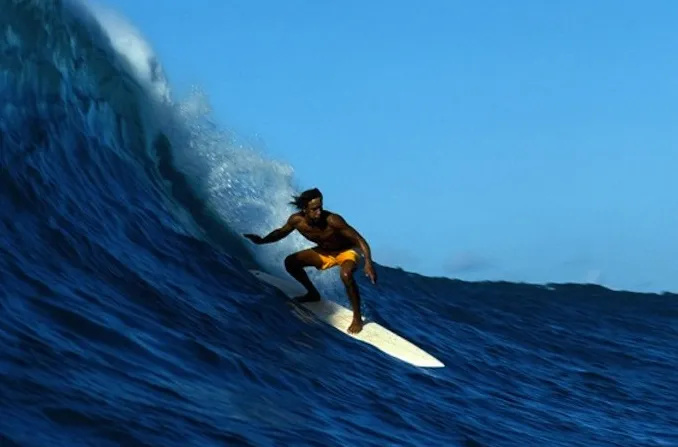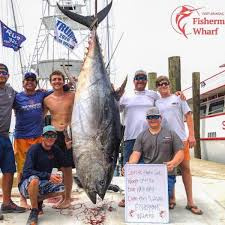“Eddie would go.”
- Mark Foo
“No one surfed like Eddie. He would take off on a huge scary wave, and he’d be sliding down it with the biggest smile you ever saw. The rest of us were nervous. Eddie belonged there; it was his home.”
- Clyde Aikau

(Eddie Aikau, North Shore, Oahu)

(Daniel Miers with his new Texas state record bluefin tuna, from 2020)
My Honolulu-born wife asked me what quote she should use for her Medical School yearbook. I said “either ‘Eddie would go’, by Mark Foo, or ‘Do, or do not, there is no try’, by Yoda.” She used them both.
It’s June 2020, and great positive changes are underway at every level of our reality. They began in earnest in 2012, and have been increasing in speed and magnitude since. I’ve been writing articles on the subject since 2013.
These positive changes are being collectively driven by many thousands of inexpensive Orgonite devices based on Wilhelm Reich’s work. Since the early 2000’s, simple Orgonite has been collectively unknitting and transforming the ancient Death energy matrix built and expanded by our dark masters, well, all the way back to Babylon and before. And, as a result, the Ether is returning to its natural state of health and vitality.
One of those changes is fish growing to sizes never seen previously.
For example, the current Texas state record bluefin tuna, from 2020, weighed 820 pounds, and was 1.4% larger than the previous record holder from 1985.
The article I got the weight from is headlined “How the New Texas State Record Bluefin Came to Be”.
Where, under the false guise of familiarity, the author has omitted the word " tuna ", to make the subject drastically less searchable.
In the article, they also obfuscated the previous record, saying only “The previous Texas state record bluefin mark was set in the 1980s .” That’s a propaganda technique called " compartmentalization ".
It was used so that I had to research another article to find out the weight of the previous record holder.
The record stood unbroken for decades, and then was suddenly broken by a significant margin. There’s clearly been some exponential change for the better in the environment of the Gulf of Mexico.
That unmentioned positive change in the environment is Etheric. The Orgonite-driven improvement of the Etheric environment in New York has caused Tuna off the coast of Texas to grow larger than any previously seen there, in all history.
There’s an international news blackout in place on the subject. It’s in place because you’re not supposed to know that the primary driver of the size and longevity of any organism is the health of its Etheric environment.
Jeff Miller, Brooklyn, New York, June 17, 2020
If you’d like to be added to this free mailing list, please send me a note at [email protected]
February 18, 2020 - Eddie Would Go: the meaning and origin of the popular saying
“Eddie Would Go” is one of the most popular and famous expressions in surf culture. It has a meaning and a consequence.
Eddie Aikau was a Hawaiian big wave surfer and North Shore of Oahu lifeguard.
The pureblood Hawaiian defined big wave surfing’s early days, especially in the 1970s. Eddie surfed and tamed Waimea Bay, one of the biggest waves in the world, better than anyone.
But, for a long time, he was just a dark-skinned, low profile wave rider, unwanted in the ever-growing tourist areas of Waikiki.
In 1966, the Catholic-raised Hawaiian surfed Waimea Bay for the first time for six straight hours and caught over a dozen 20-foot waves.
In 1972, Aikau was invited to participate in the Gunston 500. He was supposed to meet Bill Hamilton and Jeff Hakman at the Durban’s Malibu Hotel, but the concierge didn’t allow him to enter the building.
It was the apartheid era. So, Eddie stayed in a beachfront apartment alongside Shaun and Ernie Tomson.
“The color problem in South Africa, man, is really heavy. I fear to walk in the streets,” the Hawaiian told a South African newspaper before flying home.
Aikau was Waimea Bay’s first lifeguard and, while on duty, he made over 500 and lost zero souls to drowning in the high surf.
He had a relaxed and unique, bow-legged stance and rode giant waves with his arms often nearly fully extended.
The friendly, yet shy regular-footer become a six-time Duke Kahanamoku Invitational Surfing Championship finalist and won the event in 1977.
The Hawaiian surfer-lifeguard joined the Hokulea, a 60-foot replica of a Polynesian voyaging canoe, for a 2,400-mile sailing journey from Hawaii to Tahiti, using ancient navigational techniques only.
On March 17, 1978, the boat capsized 20 miles west of Lanai, and the crew lost all provisions and telecommunications.
Aikau decided to paddle his board toward Lanai to get help. But he was never seen again.
The Birth of an Icon
Before his death, Eddie Aikau was the anti-star. He was just a low-key native Hawaiian, living in a secluded house next to a Chinese graveyard, having fun in monstrous waves, and saving the lives of beachgoers.
Somehow, he was inferior in his homeland.
However, after his passing, Aikau slowly became one of the greatest references in Hawaiian culture, alongside Duke Kahanamoku.
And with the new age of big wave surfing, the surf industry felt they needed to honor the life of Hawaii’s surfing hero.
The first Quiksilver Eddie Aikau Big Wave Invitational was held in the winter of 1985/1986 at Waimea Bay. The unique contest requirement was that waves had to be 20 feet or bigger.
When the organizers were deciding whether to raise the green flag or not, Mark Foo exclaimed: “Eddie Would Go.” The expression stuck, and the contest got underway.
Paradoxically, the event became a tribute to the inspiring life of a humble man who didn’t like competition.
Only “Eddie Would Go”
When the Hokulea capsized, the crew had a conference and decided that Eddie Aikau “could go.”
So, he tied the leash to his surfboard, picked up a few oranges, and tied a life jacket to this waist. He was ready for a five-hour paddle toward Lanai.
His sacrifice reached mythic status.
“No one surfed like Eddie. He would take off on a huge scary wave, and he’d be sliding down it with the biggest smile you ever saw. The rest of us were nervous. Eddie belonged there; it was his home,” his younger brother Clyde Aikau once told.
Interestingly, and according to maritime historian Mac Simpson, “the phrase ‘Eddie Would Go’ predates Hokulea.”
“Aikau was a legend on the North Shore doing what no one else dared to - pull people out of Waimea’s giant surf. That’s where the saying comes from.”
“Eddie would go when no one else would or could. Only Eddie dared,” underlined Simpson.
“Eddie Would Go” became a semantic symbol of courage, commitment, perseverance, and aloha.
March 30, 2020 - State Fish Records - Texas Parks and Wildlife
Tuna, Bluefin, 808.00, 103.00, May 4, 1985, Gulf of Mexico, Trina Isaacs
April 10, 2020 - How the New Texas State Record Bluefin Came to Be
In a very direct sense, the pending new Texas state record bluefin tuna was a victim of the coronavirus.
Whether or not fish can actually catch this disease, who the hell knows, but the trip that resulted in greasing the biggest bluefin in the history of the Lone Star State was the result of being cooped up in the house awaiting the virus to run its course. Captain Robert Nichols, who runs the Rock Mama, a 55’ Hatteras based out of Galveston, Texas was gracious enough to tell us all about this fish of a lifetime.
Boat owner, and the man who reeled in the fish, Daniel Miers asked Nichols if he could round up a crew to take advantage of the weather window that presented the opportunity to get offshore and out of the house for a while. On the boat were Miers, his son Jacob, Capt. Robert Nichols and his two brothers Derek and Scotty. “We left out of Freeport Tuesday evening and slowboated about 100 miles to the Nansen Rig,” Nichols says.
Rock Mama owner Daniel Miers hooked the fish and fought it for six hours and 40 minutes.
“I talked to Capt. Troy Day. He had caught two blue marlin the day before but was heading home. Captain John Cochrane killed a bluefin that went 599 at Nansen too, so we were pretty excited. We planned to live bait for blue marlin.”
After getting a bit of sleep, the crew filled their tuna tubes at 4:30 am in the lights of the rig. “We put the baits out at 6:45. At about 7:00 there was an explosion. It’s hard to describe, but it looked like a 400 or 500-pound cannonball blew up in the water. There was a drill ship out at Nansen and we hooked the fish off of the bow of the drill ship.”
“We backed down a total of seven miles during the fight. When we were about four miles away from the rig, the tuna took a big run. The next thing you know, I looked down off the port side of the boat and there was a school of giant bluefin swimming and jumping around the surface of the water. We were surrounded by big tuna. I think the fish tried to join up with the school even though it was hooked.”
“My boss, Daniel Miers, hooked the fish and fought in the chair the whole time. We fought the fish for about six hours and 40 minutes. It was a pretty incredible feat. I think the whole time he might have had a few bites of kolache (a really great type of breakfast pastry) and three or four bottles of water—and that’s it. He hooked the fish himself.”
It took everyone on board, plus Ryan Doxey (who swam from another boat), plus the anchor windlass to get the brute on board. Photo courtesy Steven Caruselle
“My brothers, Derek and Scotty Nichols (who are also captains themselves) gaffed the fish. We gaffed it the first time we got him on the leader. We caught the fish on an 80 wide with 200-pound leader. The leader was light because we were fishing for blue marlin…”
“Ryan Doxey had to swim over from another boat to help us get the fish in the boat. We used the anchor windlass to help get the fish on board. We couldn’t have done it with just manpower. I removed the anchor and the chain and ran the anchor line around the boat and tied to the fish. As they were pulling, they yell up and I’d put it in gear.”
The fish weighed 820 pounds. It was 114 inches long with a girth of 80 inches.
“We got it on board but it was too big to keep fishing so we headed home even though the fishing was lights out.”
Nichols, Miers and company weighed the fish at Galveston’s Pelican Rest Marina.
Congratulations from InTheBite on the fish of a lifetime. The previous Texas state record bluefin mark was set in the 1980s.
June 1, 2020 - Riverton angler reels in monster sucker, state record
RIVERTON, Wyo. — Wyoming’s white sucker state record has been broken for the first time since 2011. The new record white sucker was caught in the Wind River on March 20, 2020.
Riverton angler Patrick Edwards set the new record with a fish that weighed in at 5 pounds 6.45 ounces. Edwards’ fish was 22-inches long with a girth of 13.5 inches.
The previous state record was caught in the Bighorn River and weighed in at 4.4 pounds.